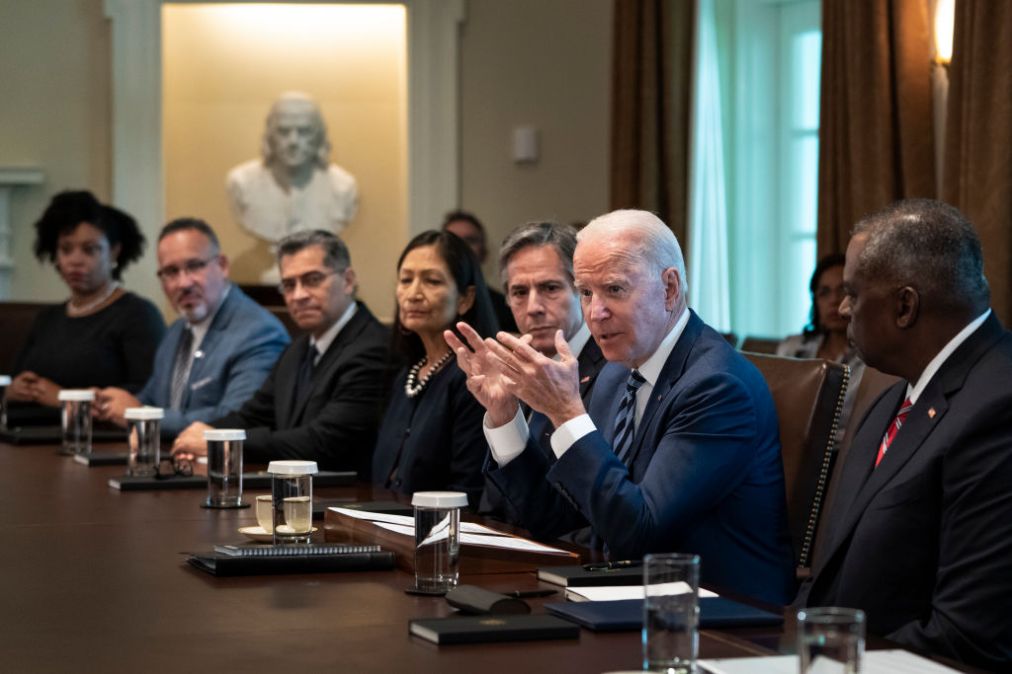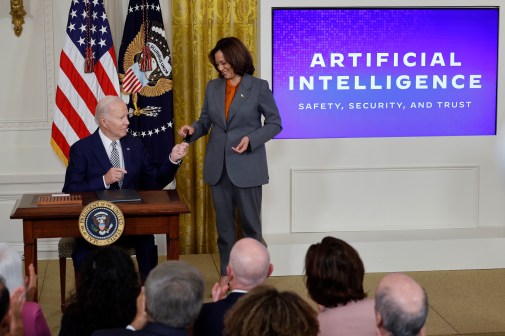Cybersecurity executive order requirements are nearly complete, GAO says

Just a half-dozen leadership and oversight requirements from the 2021 executive order on improving the nation’s cybersecurity remain unfinished by the agencies charged with implementing them, according to a new Government Accountability Office report.
Between the Cybersecurity and Infrastructure Security Agency, the National Institute of Standards and Technology and the Office of Management and Budget, 49 of the 55 requirements in President Joe Biden’s order aimed at safeguarding federal IT systems from cyberattacks have been fully completed. Another five have been partially finished and one was deemed to be “not applicable” because of “its timing with respect to other requirements,” per the GAO.
“Completing these requirements would provide the federal government with greater assurance that its systems and data are adequately protected,” the GAO stated.
Under the order’s section on “removing barriers to threat information,” OMB only partially incorporated into its annual budget process a required cost analysis.
“OMB could not demonstrate that its communications with pertinent federal agencies included a cost analysis for implementation of recommendations made by CISA related to the sharing of cyber threat information,” the GAO said. “Documenting the results of communications between federal agencies and OMB would increase the likelihood that agency budgets are sufficient to implement these recommendations.”
OMB also was unable to demonstrate to GAO that it had “worked with agencies to ensure they had adequate resources to implement” approaches for the deployment of endpoint detection and response, an initiative to proactively detect cyber incidents within federal infrastructure.
“An OMB staff member stated that, due to the large number of and decentralized nature of the conversations involved, it would not have been feasible for OMB to document the results of all EDR-related communications with agencies,” the GAO said.
OMB still has work to do on logging as well. The agency shared guidance with other agencies on how best to improve log retention, log management practices and logging capabilities but did not demonstrate to the GAO that agencies had proper resources for implementation.
CISA, meanwhile, has fallen a bit short on identifying and making available to agencies a list of “critical software” in use or in the acquisition process. OMB and NIST fully completed that requirement, but a CISA official told the GAO that the agency “was concerned about how agencies and private industry would interpret the list and planned to review existing criteria needed to validate categories of software.” A new version of the category list and a companion document with clearer explanations is forthcoming, the official added.
CISA also has some work to do concerning the Cyber Safety Review Board. The multi-agency board, made up of representatives from the public and private sectors, has felt the heat from members of Congress and industry leaders over what they say is a lack of authority and independence. According to the GAO, CISA hasn’t fully taken steps to implement recommendations on how to improve the board’s operations.
“CISA officials stated that it has made progress in implementing the board’s recommendations and is planning further steps to improve the board’s operational policies and procedures,” the GAO wrote. “However, CISA has not provided evidence that it is implementing these recommendations. Without CISA’s implementation of the board’s recommendations, the board may be at risk of not effectively conducting its future incident reviews.”
Federal agencies have, however, checked off the vast majority of boxes in the EO’s list. “For example, they have developed procedures for improving the sharing of cyber threat information, guidance on security measures for critical software, and a playbook for conducting incident response,” the GAO wrote. Additionally, the Office of the National Cyber Director, “in its role as overall coordinator of the order, collaborated with agencies regarding specific implementations and tracked implementation of the order.”
The GAO issued two recommendations to the Department of Homeland Security, CISA’s parent agency, and three to OMB on full implementation of the EO’s requirements. OMB did not respond with comments, while DHS agreed with GAO recommendations on defining critical software and improving the Cyber Safety Review Board’s operations.





